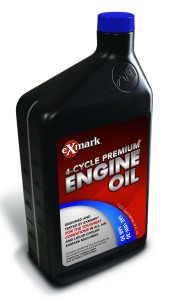Fuel safety is critical to the safe operation of any mower, and understanding how and when to inspect fuel system components doesn’t just increase safety, it also increases mower efficiency and longevity.

Keeping your mower clean from accumulated debris makes it easier to spot fuel system problems and reduces the risk of fire.
Tips that can increase the safety of you and your workers when working with fuel include:
- Prior to fueling, always shut the mower down completely and allow it to cool.
- When refueling, verify the correct type of fuel is being used — Filling the tank of a diesel-powered mower with gasoline (or vice versa) can cause significant engine damage, so double-check your fuel before you fill.
- DO NOT operate the mower if any of the following fuel system conditions exist:
- Fuel is leaking around hoses and/or clamps.
- The fuel tank makes a hissing sound when the cap is loosened.
- The fuel tank is bulging or collapsing.
- Keep the mower clean and free of debris — Accumulation of grass, leaves, excessive grease or oil, or other debris can become combustible and could result in fire. After each mower use, remove debris from:
- Fuel tank
- Engine and muffler area
- Oil filter area
- Under belt shields
- Frequently check all fuel hoses, clamps and connections — Some fuel system components are under pressure. Fuel hoses can be pulled, damaged or disconnected from contact with bushes, tree branches or other landscape features.
- Check that all hoses are in good working condition and verify the secure fastening of clamps and connection points.
- When replacing hoses and filters, use original factory routing and clamping.
- Use only Original Equipment Manufacturer’s (OEM) replacement parts — Using improper components can result in gasoline leakage, fuel system failure and/or an increased potential for fire. Saving a buck just isn’t worth the risk!
- Keep all guards, shields and safety devices in place and in safe working condition.
- Before each use, check the condition of all electrical wires — Damaged wires increase the potential for a fire. Never operate a mower with damaged wiring. Replace or repair the damaged wire(s) and secure properly prior to mower operation.
Consult your operators manual for specific fuel system information for your mower. Visit http://www.exmark.com/Safety/ to view the online safety resources Exmark offers, or visit your Authorized Exmark dealer or distributor for prompt, efficient service with any fuel- or fuel system-related need.


 It’s true we have multiple posts discussing lubrication. (
It’s true we have multiple posts discussing lubrication. (




